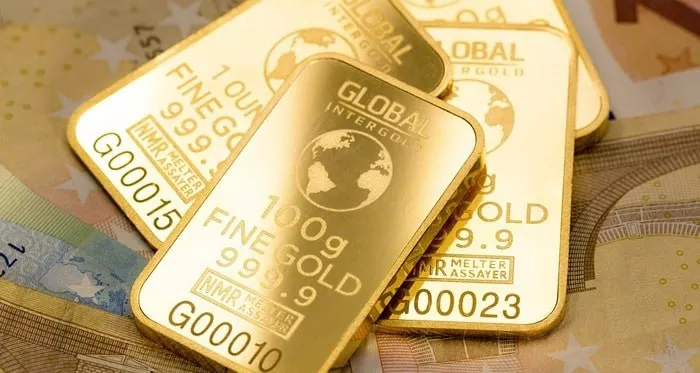Gold, throughout history, has maintained its allure as a symbol of wealth, luxury, and stability. Its value transcends borders and time, making it a coveted asset for investors and individuals alike. However, understanding the worth of even the smallest unit of gold, such as 1 milligram (mg), requires delving into various factors that influence its price. From market dynamics to purity standards, the value of 1 mg of gold can vary significantly. In this comprehensive guide, we’ll explore what determines the value of this tiny but precious amount of gold.
Gold’s Intrinsic Value:
Gold’s value stems from its intrinsic properties. As a chemical element with atomic number 79, gold possesses unique characteristics that make it valuable. Its rarity, malleability, conductivity, and resistance to corrosion contribute to its desirability. Unlike fiat currencies, which derive their value from governmental backing, gold holds inherent worth due to its scarcity and utility across various industries.
Market Dynamics:
The price of gold is subject to fluctuations in the global market. Supply and demand dynamics play a crucial role in determining its value. Economic indicators, geopolitical tensions, inflation rates, and currency movements influence investor sentiment towards gold, impacting its market price. Moreover, central bank policies, such as interest rate adjustments and quantitative easing measures, can affect the demand for gold as a hedge against currency devaluation and economic uncertainty.
Purity Standards:
Gold is often traded in the form of bullion or coins, each adhering to specific purity standards. The purity of gold is measured in karats or fineness. Karat indicates the proportion of pure gold present in an alloy, with 24 karats representing pure gold. Fineness, on the other hand, denotes the purity of gold in parts per thousand. For example, 999 fine gold is 99.9% pure. The purity of gold significantly impacts its value, with purer forms commanding higher prices due to their intrinsic worth.
Calculating the Value of 1 mg of Gold:
To determine the value of 1 mg of gold, one must consider the current market price per gram and the purity of the gold in question. Using the formula:
Value of 1 mg of Gold= (Gold Price per Gram/1000) × Purity Factor
Where the purity factor is calculated by dividing the purity percentage by 100.
For example, if the current gold price per gram is $69.82 and the gold is 99.9% pure (999 fineness):
Purity Factor=999/100=9.99
Value of 1 mg of Gold=69.82/1000×9.99
Value of 1 mg of Gold≈$0.6988
Therefore, 1 mg of 999 fine gold is approximately worth $0.6988.
Factors Influencing the Value of Gold:
Several factors influence the value of gold, affecting its price per milligram. Economic stability, inflation rates, central bank policies, geopolitical tensions, and currency movements can lead to fluctuations in gold prices. Additionally, investor sentiment, speculative trading, and technological advancements in gold mining and extraction techniques impact supply and demand dynamics, further influencing its value.
Investment Considerations:
Gold serves as a hedge against inflation, currency depreciation, and economic instability. As part of a diversified investment portfolio, it can mitigate risks and preserve wealth over the long term. However, investors should assess their risk tolerance, investment objectives, and time horizon before allocating funds to gold. Exchange-traded funds (ETFs), gold futures contracts, physical bullion, and gold mining stocks are among the investment vehicles available for exposure to gold.
Conclusion:
The value of 1 mg of gold is determined by various factors, including market dynamics, purity standards, and investor sentiment. While its price per milligram may seem insignificant compared to larger quantities, the intrinsic value of gold as a tangible asset remains steadfast. Understanding the complexities of the gold market empowers investors and enthusiasts to make informed decisions regarding gold acquisition and investment strategies.
FAQs
Q1. Why is gold considered valuable?
A1: Gold’s value stems from its intrinsic properties, including rarity, malleability, conductivity, and resistance to corrosion. It has been revered throughout history as a symbol of wealth, stability, and luxury. Additionally, gold serves practical purposes in various industries, further enhancing its desirability and value.
Q2. How does the purity of gold affect its price?
A2: The purity of gold significantly impacts its value, with purer forms commanding higher prices due to their intrinsic worth. Gold is often traded in the form of bullion or coins, each adhering to specific purity standards measured in karats or fineness. Higher purity gold is more desirable for investment purposes and may carry a premium over less pure counterparts.
Q3. What factors influence the price of gold?
A3: Several factors influence the price of gold, including economic indicators, geopolitical tensions, inflation rates, currency movements, central bank policies, and investor sentiment. Supply and demand dynamics, speculative trading, and technological advancements in gold mining also play a role in determining its market value.


